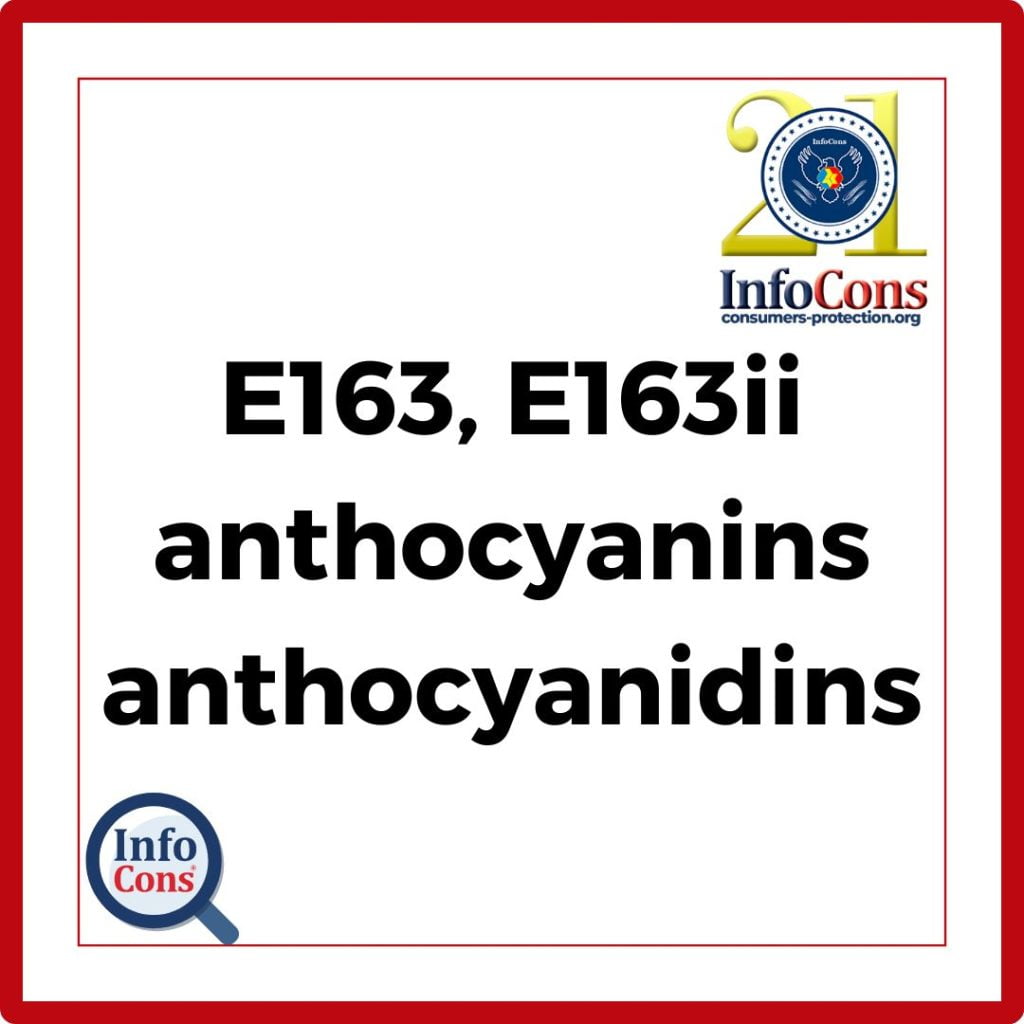
What are food additives E163, E163(ii) ?
E163 and E163(ii), anthocyanins and anthocyanidins, represent a broad group of natural colorants that give red, blue, and purple hues to many fruits, vegetables, and flowers. They belong to the flavonoid group of phytochemicals and are recognized not only for their vibrant colors but also for their potential health benefits.
In the context of food additives, they are noted with the number E163.
These colorants are widely used, but they are unstable and influenced by temperature, light, and pH levels.
How are E163 and E163ii obtained ?
E163 is the european code for food additives referring to anthocyanins. These are water-soluble flavonoid compounds found in the vacuoles of plant tissues. Primary sources for obtaining E163 anthocyanins include berries, grapes, red cabbage, and purple corn.
Each of these sources offers a unique profile of anthocyanins, contributing to different shades of red, purple, and blue. The extraction process for E163 involves crushing plant material and using solvents like ethanol or water to separate the anthocyanins. The resulting extract is then purified and concentrated for use in food products.
E163ii is a specific form of anthocyanin extracted from blackcurrants. It is part of the broader E163 category and has a specific designation due to its deep, rich color and high anthocyanin content. The extraction process for E163ii is similar to that for general anthocyanins but is tailored to optimize the color extraction from blackcurrants, ensuring a high concentration of the desired pigments.
Read also – E160C – Capsanthin (Paprika)
What is the recommended daily dose?
Food additives E163 and E163ii are approved for use by various regulatory bodies worldwide. In the European Union, they are listed under the food additive code E163 and are considered safe for consumption. The European Food Safety Authority (EFSA) has concluded that these anthocyanins are safe for use in foods and beverages.
The acceptable daily intake for human consumption has been determined to be up to 2.5 mg/kg body weight per day for E163ii. For E163, no specific recommended daily dose has been established.
In what foods are E163 and E163ii found?
E163 and E163ii are widely used in the food industry for their coloring properties. They are preferred for their natural origin and the vibrant colors they impart.
- Beverages: Used in fruit juices, soft drinks, and alcoholic beverages to enhance or restore the natural color lost during processing.
- Dairy products: Used in yogurts, ice creams, and other dairy products to achieve an appealing hue.
- Confectionery products: Used in candies, gums, and other sweets to provide a natural red, purple, or blue color.
- Pastry products: Used in berry creams for pastries.
Read also – Recycle electronic and household appliances with the European InfoCons App on World Environment Day !
Contraindications and risks
Generally, consuming anthocyanins from natural sources is considered safe. More research is needed to definitively evaluate the safety of concentrated anthocyanin extracts used as food additives. However, it is important to note that while anthocyanins are generally considered safe, excessive consumption of any food additive should be avoided.
Regulatory authorities set maximum allowable limits to ensure consumer safety, and exceeding these limits can pose health risks. As consumers increasingly seek natural alternatives to synthetic additives, the importance of natural compounds like anthocyanins is likely to grow. Look for products with a cleaner label or those using natural additives. By installing the InfoCons app and scanning the barcodes of food products, you can find out the number and type of food additives used.
Author – Cosmina Nițu
Master in Nutrition – Infant and new born nutrition
Sources:
https://www.efsa.europa.eu/ – European Food Safety Authority (EFSA)
NCBI – National Center for Biotechnology Information
InfoCons – European Organization for Consumers Protection and Promotion of Programs and Strategies , a full member of the World Organization Consumers International, founding member of the Federation of Consumer Associations, and member of ANEC.